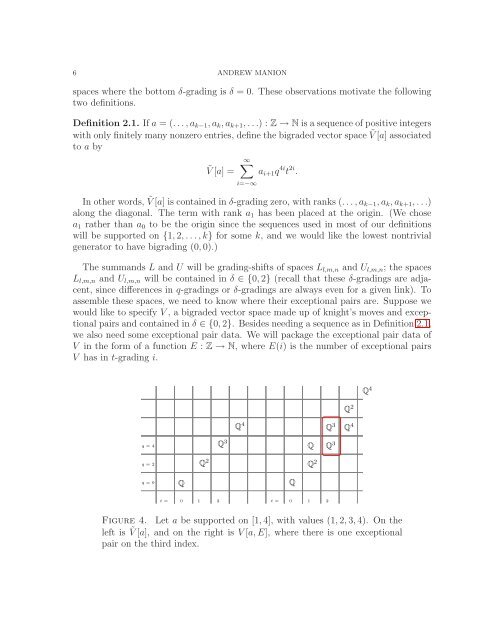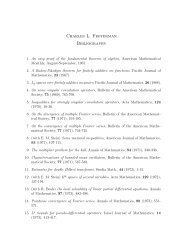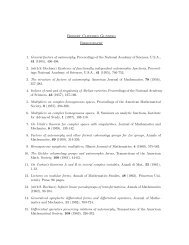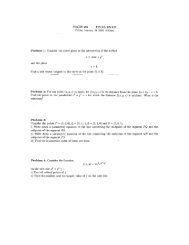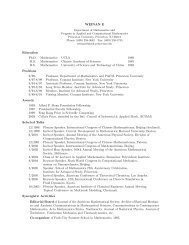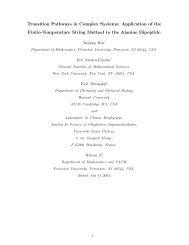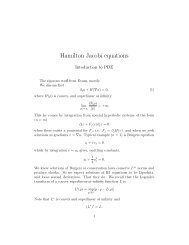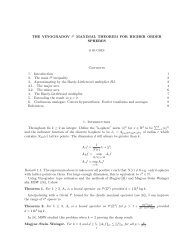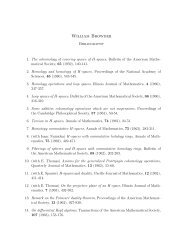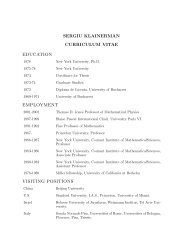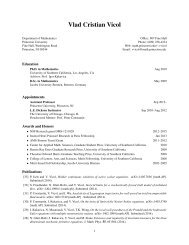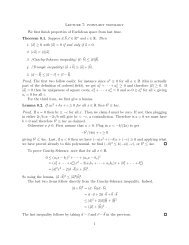The rational Khovanov homology of 3-strand pretzel links
The rational Khovanov homology of 3-strand pretzel links
The rational Khovanov homology of 3-strand pretzel links
Create successful ePaper yourself
Turn your PDF publications into a flip-book with our unique Google optimized e-Paper software.
6 ANDREW MANION<br />
spaces where the bottom δ-grading is δ = 0. <strong>The</strong>se observations motivate the following<br />
two definitions.<br />
Definition 2.1. If a = (...,a k−1 ,a k ,a k+1 ,...) : Z → N is a sequence <strong>of</strong> positive integers<br />
with only finitely many nonzero entries, define the bigraded vector space Ṽ [a] associated<br />
to a by<br />
∞∑<br />
Ṽ [a] = a i+1 q 4i t 2i .<br />
i=−∞<br />
In other words, Ṽ [a] is contained in δ-grading zero, with ranks (...,a k−1,a k ,a k+1 ,...)<br />
along the diagonal. <strong>The</strong> term with rank a 1 has been placed at the origin. (We chose<br />
a 1 rather than a 0 to be the origin since the sequences used in most <strong>of</strong> our definitions<br />
will be supported on {1, 2,...,k} for some k, and we would like the lowest nontrivial<br />
generator to have bigrading (0, 0).)<br />
<strong>The</strong> summands L and U will be grading-shifts <strong>of</strong> spaces L l,m,n and U l,m,n ; the spaces<br />
L l,m,n and U l,m,n will be contained in δ ∈ {0, 2} (recall that these δ-gradings are adjacent,<br />
since differences in q-gradings or δ-gradings are always even for a given link). To<br />
assemble these spaces, we need to know where their exceptional pairs are. Suppose we<br />
would like to specify V , a bigraded vector space made up <strong>of</strong> knight’s moves and exceptional<br />
pairs and contained in δ ∈ {0, 2}. Besides needing a sequence as in Definition 2.1,<br />
we also need some exceptional pair data. We will package the exceptional pair data <strong>of</strong><br />
V in the form <strong>of</strong> a function E : Z → N, where E(i) is the number <strong>of</strong> exceptional pairs<br />
V has in t-grading i.<br />
q = 4<br />
q = 2<br />
Q 4<br />
Q 2<br />
Q 3 Q 4<br />
Q Q 3<br />
Q 2<br />
Q 2 Q 3 Q 4 Q<br />
q = 0<br />
Q<br />
t = 0 1 2 t = 0 1 2<br />
Figure 4. Let a be supported on [1, 4], with values (1, 2, 3, 4). On the<br />
left is Ṽ [a], and on the right is V [a,E], where there is one exceptional<br />
pair on the third index.


